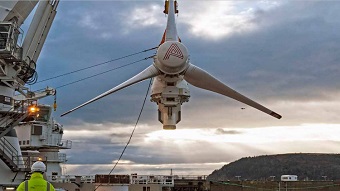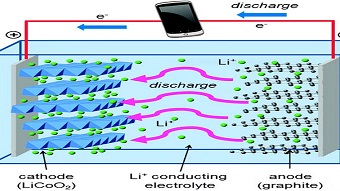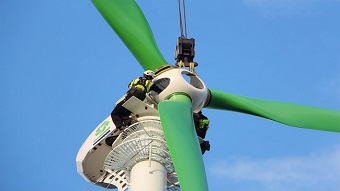Tri-State pivots to renewable energy as coal plants close
David Wagman | January 21, 2020Days after announcing plans to close all of its coal-fired generation, Tri-State Generation and Transmission Association said it will add six renewable energy projects in Colorado and New Mexico, part of its goal to have half of the energy consumed by its wholesale electric customers come from renewable sources by 2024.
The six are in addition to two previously announced projects that are yet to be constructed. Combined, the new generating resources will result in more than 1 gigawatt of renewable resource capacity added to Tri-State’s generating mix by 2024.
 Earlier in January, Tri-State said it will close the 253 megawatt (MW) Escalante Station in New Mexico by the end of 2020. The plant closure will impact 107 employees. In Colorado, the three-unit 1,855 MW Craig Station will close by 2030. The power plant employs 253 people.
Earlier in January, Tri-State said it will close the 253 megawatt (MW) Escalante Station in New Mexico by the end of 2020. The plant closure will impact 107 employees. In Colorado, the three-unit 1,855 MW Craig Station will close by 2030. The power plant employs 253 people.
Tri-State retired its coal ownership capacity in Unit 3 of the San Juan Generation Station in New Mexico in 2017. The co-op previously announced that the 427 MW Craig Station Unit 1 will close by the end of 2025. The 410 MW Unit 2 and the 448 MW Unit 3 will close by 2030.
In addition, Tri-State said the Colowyo Mine, which produces coal used at Craig Station, will cease production by 2030 and the site will be reclaimed. The mine employs 219 people. Tri-State retired its coal capacity at Nucla Station in Western Colorado in 2019.
Tri-State also said it plans to develop no additional coal facilities, and has cancelled its Holcomb coal project in southwestern Kansas. The air permit for the project will expire in March 2020.
Renewable energy assets
The eight renewable energy projects Tri-State plans to add to its resource portfolio by 2024 include:
• Escalante Solar, a 200 MW project located in Continental Divide Electric Cooperative’s service territory in New Mexico. Tri-State has a contract with Turning Point Energy for the project. The solar project is on land near Escalante Station, which will close this year.
• Axial Basin Solar, a 145 MW project in northwest Colorado in White River Electric Association’s service territory. Tri-State has a contract with Juwi for the project. The project is located on land near the Colowyo Mine, which will close by 2030.
• Niyol Wind, a 200 MW project located in eastern Colorado in Highline Electric Association’s service territory. Tri-State has a contract with NextEra Energy Resources for the project.
• Spanish Peaks Solar, a 100 MW project, and Spanish Peaks II Solar, a 40 MW project, located in southern Colorado in San Isabel Electric Association’s service territory. Tri-State has contracts with Juwi for both solar projects.
• Coyote Gulch Solar, a 120 MW project located in southwest Colorado in La Plata Electric Association’s service territory. Tri-State has a contract with Juwi for the project.
• Dolores Canyon Solar, a 110 MW project located in southwest Colorado in Empire Electric Association’s service territory. Tri-State has a contract with Juwi for the project.
• Crossing Trails Wind, a 104 MW project located in eastern Colorado in K.C. Electric Association’s service territory. Tri-State has a contract with EDP Renewables for the project.
Tri-State said that by 2024 it will have more than 2,000 MW of renewable capacity on its 3,000 MW peak system. That is expected to include 800 MW of solar power from nine projects, 671 MW of wind power from six projects and 600 MW of large and small hydropower.





I think it is important to ask for "zero-carbon" energy instead of "renewable." This would at least give the option of nuclear generation, which can handle the electric power without the intermittency of wind and solar.